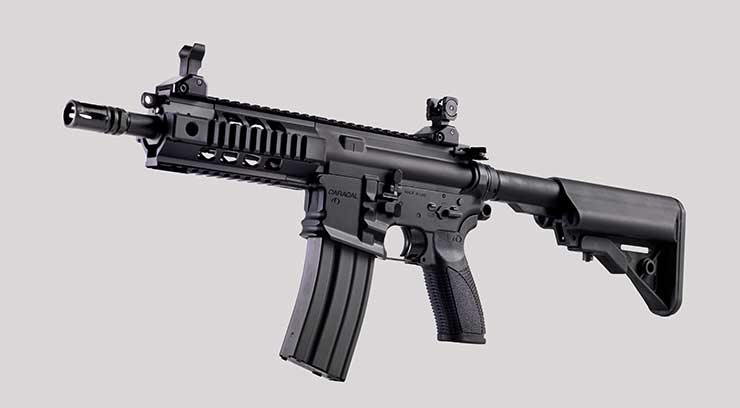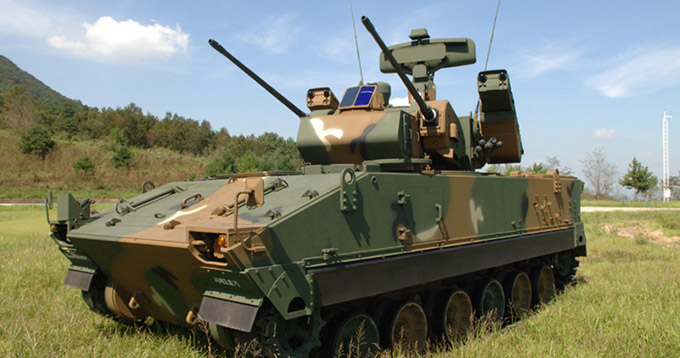 The term Atmanirbhar Bharat sounds musical to ears and enhances the nationalistic spirit at the outset. A step forward and deeper to understand it in realistic terms portrays a different impression – a concept with righteous intent but plagued with challenging inner contradictions. Last month, the government came out with a negative import list of 101 items. Despite this, the open tender for 7.62x51mm sniper rifles (it figures in the negative import list) from National Security Guard (NSG) and the Indo-Tibetan Border Police (ITBP) that allow foreign purchases, is one fine example of the inner contradictions that challenges the Atmanirbhar Bharat initiative. The best way would have been to go for sniper rifles made by Indian manufacturers as its very mention by the defence ministry in the negative list shows that the product can be made available through domestic production. Instead, the open tender route taken just before the negative import list comes into force in December 2020 threatens to dampen the confidence in the self-reliance initiative and in all probability derail it even before it gains momentum.
The term Atmanirbhar Bharat sounds musical to ears and enhances the nationalistic spirit at the outset. A step forward and deeper to understand it in realistic terms portrays a different impression – a concept with righteous intent but plagued with challenging inner contradictions. Last month, the government came out with a negative import list of 101 items. Despite this, the open tender for 7.62x51mm sniper rifles (it figures in the negative import list) from National Security Guard (NSG) and the Indo-Tibetan Border Police (ITBP) that allow foreign purchases, is one fine example of the inner contradictions that challenges the Atmanirbhar Bharat initiative. The best way would have been to go for sniper rifles made by Indian manufacturers as its very mention by the defence ministry in the negative list shows that the product can be made available through domestic production. Instead, the open tender route taken just before the negative import list comes into force in December 2020 threatens to dampen the confidence in the self-reliance initiative and in all probability derail it even before it gains momentum.
Being self-reliant (Atmanirbhar) in defence manufacturing is crucial for aspiring India to safeguard its interest amid the growing complexity of security challenges in its neighbourhood. India can retain its strategic autonomy only with economic prosperity and enhanced indigenous defence capabilities.
The success of Atmanirbhar Bharat will depend much on the right blend of policy implementations to fix the inherent challenges like long gestation period in creation of the defence industrial complex, long delays in decision making, lack of critical technologies and coordination, absence of level-playing field between Defence Public Sector Units (DPSUs) and private sector.
The recent development as reported in media about the fate of Close Quarter Battle (CQB) Carbine and Self-Propelled Air Defence Gun Missile System (SPAD-GMS) brings to the forefront the inner contradictions of the Atmanirbhar Bharat initiative that will require laser focussed attention to overcome in near term.
Going by the reports, it appears that two defence deals – CQB Carbine and SPAD-GMS worth nearly US$4 billion have been lost due to the Atmanirbhar Bharat policy enunciated by Prime Minister Narendra Modi in the wake of the pandemic COVID 19 with focus on “Make in India.”
Thus, it raises a few valid questions – Does India seriously mean business and values essence of time to achieve self-reliance in defence? Does India actually believe in its policy reforms and Fast Track Procurement (FTP) measures? Does India have faith in its equipment / platform trial and selection process? How long will the Indian Army remain under equipped?
Let’s take a look of the CQB and SPAD-GMS deals status currently as reported by media, sequence wise –
The decision to scrap these two deals was taken at a special meeting convened by Defence Secretary of top officials and the two projects be taken up by indigenous industries.
The Defence Ministry is learnt to have decided to scrap two deals that were being pursued under foreign procurement — CQB carbine and Self-Propelled Air Defence Gun Missile System (SPAD-GMS) from South Korea — and route them through the ‘Make in India’ initiative.
According to some media reports quoting sources, “a UAE government delegation recently met senior officials at the Indian mission in Abu Dhabi. The main agenda was to discuss the long delay in the signing of the deal for Close Quarter Carbine (CQB) for the Infantry soldiers.”
Sources now indicated that the FTP numbers could actually be added to the overall demand and a tender could be issued next year.
Though there is still a lack of clarity on the reason about delay, sources have indicated, “While the Ministry of Defence (MoD) is keen to add `Make in India’ clause, the Indian Army Headquarters is keen to conclude this deal fast as the CQBs are needed on an urgent basis and there is a possibility of the deal being inked before the year end.” And this will help the soldiers, added the sources.
Several presentations have been made to the office of the Chief of Defence Staff (CDS), outlining the reasons for the urgent requirement for the carbines. To push the `Make in India’ initiative, the MoD plans to initiate the procedure for CQBs to be made here locally, as several Indian companies have offered to manufacture the carbines here in India,” a senior officer indicated.
According to reports, Indian company Bharat Forge along with the European company Thales has offered to make these CQBs here locally and at the same price as being offered by the UAE based company.
These CQBs are a critical weapon for the troops posted in the Valley and on the Line of Control (LOC), to deal with the constant terrorist attacks from the Pakistan side. And with China becoming belligerent along the Line of Actual Control (LAC), the LOC is becoming more active, and this is why the Indian Army wants to ensure the procurement is expedited.
The CQB Story So Far

The deal for the new CQB Carbines had been in the works since 2017. The carbines are meant to replace the outdated and ageing 9mm British Sterling 1A1 sub-machine guns that are currently in service. In 2017, a global Request for Information (RFI) was issued for the purchase of two lakh carbines while a separate process was rolled out to procure 93,895 under FTP.
The Army had in 2017 decided to opt for Fast Track Procurement (FTP) of 93,895 new carbines against an overall demand of 3.5 lakh such weapons. Considering that the CQB carbine, from UAE firm Caracal International finished as ‘L1’ or the lowest bidder in September 2018 for a contract that was supposed to be fast-tracked, was indeed an imperative need for the armed forces in view of the threat emanating from the two fronts and the need of the hour was to arm the troops with latest and potent equipment.
Now it has been 19 months since the company, after going through extensive trials in different terrains in India as well as outside the country, was declared L1. During the trials, Indian ammunition was used in the CQBs made in UAE. However, there were several representations by other bidders S&T Motiv of South Korea and European company Thales which had failed to clear the trials.
And to study those representations an Oversight Committee led by a Brigadier rank officer was set up which went through them and submitted its report to the MoD. “The representations made to the MoD basically stated that the UAE based company has no facility to fulfil India’s order and this could delay the delivery of 93,895 CQBs,” said an officer. Once the government decides to procure through this route then the delivery has to be made within one year from the time the contract is signed.
The SPAD-GMS Saga Thus Far
The Self-Propelled Air Defence Gun Missile System is another project that has run into rough weather. This was meant to replace the 1,360 obsolete Bofors L 70 40 mm single barrel and Soviet-era ZU-23-2 towed 23 mm twin-barrel weapon systems.

The tender for this was floated in 2013. It all started with five bidders. However, only Russia and South Korea made it to the trial stage. The competition was primarily between Russia and South Korea. Russia had fielded two weapon systems — the upgraded Tunguska system fielded by arms company Almaz Antey and Pantsir by a company called KBP Tula — but failed to pass the technical rounds.
South Korean company Hanwha Defense, which had put forward ‘Hybrid Biho’, did not meet full technical parameters. It created a single vendor situation and Russia continued complaining to the Ministry of Defence against the short listing of South Korean system since 2018. To ensure that all the steps have been followed and concerns raised by those who could not be shortlisted, the MoD decided to have independent monitors to come out with a comprehensive report and to outline the concerns, if any. And sources in the Indian Army observed that there are shortcomings in both the Russian and South Korean systems.
As stated by Prime Minister Modi, Atmanirbhar Bharat is not about being self-contained or being closed to the world, it is about being self-sustaining and self-generating. The government will pursue policies that promote efficiency, equity and resilience. Atmanirbhar Bharat is not inward-looking, but for making India capable and boosting global peace and economy. Technological upgrade is necessary for self-sufficiency in modern equipment and there is also a need to work on preparing the next generation of the devices that are being made today for the armed forces. India has the capability to become a reliable supplier of weapons to friendly nations which will help in consolidating its position as a strong security provider in the region.
Thus, the decision to scrap the CQB carbine and SPAD-GMS deals to further the Atmanirbharta cause will not only be self-defeating but will also undermine India’s hard earned position as a trust worthy and reliable nation. Having spent years, precious time and efforts on these deals, the decision to put an end to it and start afresh would be of grave consequences.
The pragmatic way would be to honour the CQB deal and move faster on the procurement of future requirement (around 4,00,000 carbine considering combined demand of Indian Army and para-military forces) with indigenous thrust. A similar stance regarding SPAD-GMS deal too can pave way to form collaborative and co-development partnership. It will also provide an affirmative response to the questions raised above. Else, it will make many believe that Atmanirbharta in Defence is nothing but a smokescreen to merely cover up India’s shortcomings in defence capabilities and economic growth story with no sincere intent to reverse the situation.
-The author is a senior journalist and media consultant, and the co-author is Editor, Raksha Anirveda. Views expressed are of the author(s).









